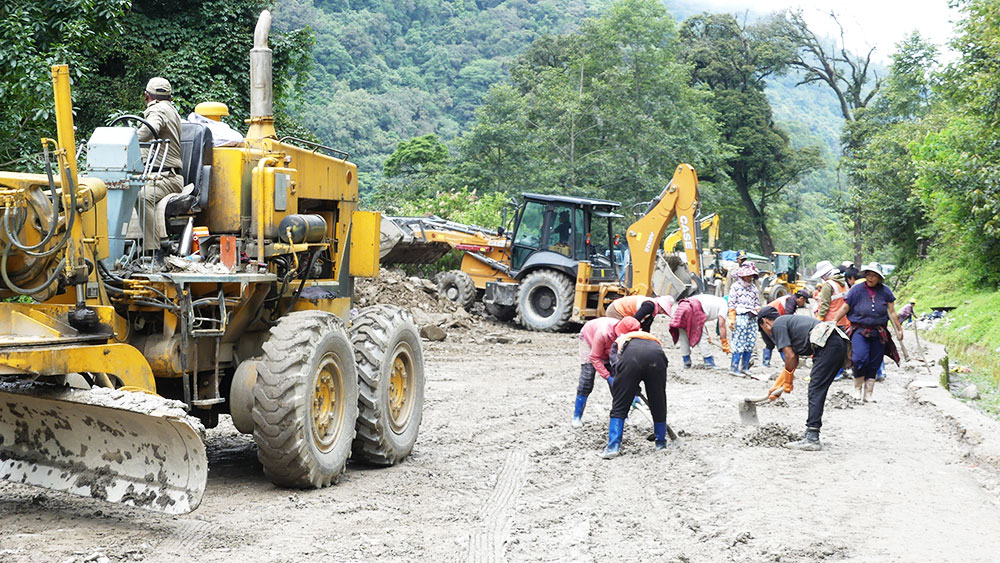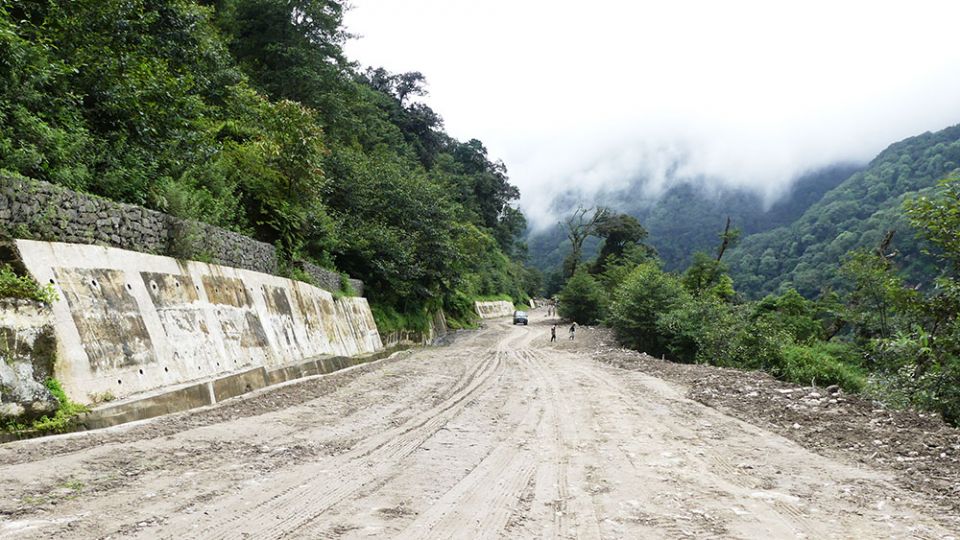
The Damchhu-Chukha bypass, which was closed due to heavy rains causing mud and debris to accumulate, has been cleared and reopened for traffic. The clearance operation involved earthmovers and over 60 workers over two days.
While the traffic is open, the road maintenance will continue for a few more months before black-topping the entire stretch.
A 450-metre stretch of the bypass near Tshimasham junction had accumulated mudslides, debris, and pebbles, making it difficult for vehicles to pass.
Commander of the Border Roads Task Force, Colonel Ashish Dubey, said that the 45-centimetre-high sediments accumulated above the blacktopping were causing problems for vehicles, particularly small cars.
“The problem is perennial and is a matter of urgency for which a detachment with containerised shelter is stationed in the area,” he said. “Pulling in six JCBs, roller, excavator, and trucks, all the sediments were cleared so that we could re-work on the hard surface.”
The issue at the stretch is mainly due to the geo-technical imbalance caused by monsoon rainfall, and a dam reservoir right below the highway forming cracks, which is settling.
According to Colonel Ashish Dubey, unstable slope is an issue which DANTAK’s General Reserve Engineer Force (GREF) will focus on in the 13th Plan with geo-techs along with the department of surface transport.
“DANTAK receives about Nu 16 million as maintenance grant annually, which was insufficient,” he said. “For the 13th Plan, DANTAK has proposed Nu 320 million for maintenance and stabilisation of 10-stretches with the current stretch as priority.”
While the proposal has been approved in principle, the team is waiting for approval from the Government of India, following which necessary works will be initiated after pooling in the resources.

The 29.2-kilometre bypass was opened for traffic on July 18, 2018. GREF has found 10 major stretches spanning about two kilometres where landslides and mudslides are witnessed due to unstable slopes.
Re-surfacing at this time was not a solution, Colonel Ashish Dubey said. As the season gets better the GREF will work on stabilising the slopes along the road to ensure that the road quality is maintained.
At the moment, a recovery van has been stationed for emergencies along with a detachment of personnel working there.
Chief engineer of DANTAK, Brigadier Rohit Gupta, said that slope had not stabilised yet due to the slope-cutting being just a couple of years. “Perennial landslides and related issues are our concern which we plan to solve strategically.”
Project DANTAK was committed towards development of quality infrastructure in Bhutan, he said. Within the last one month, DANTAK’s GREF team has maintained 141 slides across the country without major roadblocks and route diversion.
“Most of the DANTAK’s road construction works, worth about Nu 1.05 billion, are done by Bhutanese contractors and engineers that employ over 60 percent of Bhutanese workers with proper insurance and compensation,” Brigadier Rohit Gupta said.
Project DANTAK has been in Bhutan as early as 1961 with Phuentsholing-Thimphu highway being their first project.
Damchhu-Chukha bypass construction started in March 2010 with a total cost of Nu 2.870 billion.












